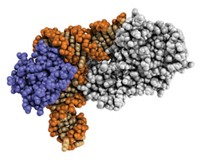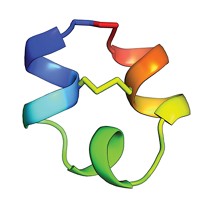Advertisement
Grab your lab coat. Let's get started
Welcome!
Welcome!
Create an account below to get 6 C&EN articles per month, receive newsletters and more - all free.
It seems this is your first time logging in online. Please enter the following information to continue.
As an ACS member you automatically get access to this site. All we need is few more details to create your reading experience.
Not you? Sign in with a different account.
Not you? Sign in with a different account.
ERROR 1
ERROR 1
ERROR 2
ERROR 2
ERROR 2
ERROR 2
ERROR 2
Password and Confirm password must match.
If you have an ACS member number, please enter it here so we can link this account to your membership. (optional)
ERROR 2
ACS values your privacy. By submitting your information, you are gaining access to C&EN and subscribing to our weekly newsletter. We use the information you provide to make your reading experience better, and we will never sell your data to third party members.
Synthesis
RNA Analogs Fluoresce Brightly
Synthetic mimics can help probe properties of nucleic acids
by Celia Henry Arnaud
September 12, 2011
| A version of this story appeared in
Volume 89, Issue 37
A complete set of fluorescent RNA nucleoside analogs gives researchers an improved tool for probing biophysical properties of nucleic acids, according to a new study (J. Am. Chem. Soc., DOI: 10.1021/ja206095a). Chemists Yitzhak Tor, Dongwon Shin, and Renatus W. Sinkeldam of the University of California, San Diego, synthesized all four analogs using the same thienopyrimidine core. The researchers obtained the pyrimidine analogs (cytidine analog shown) by adding





Join the conversation
Contact the reporter
Submit a Letter to the Editor for publication
Engage with us on Twitter